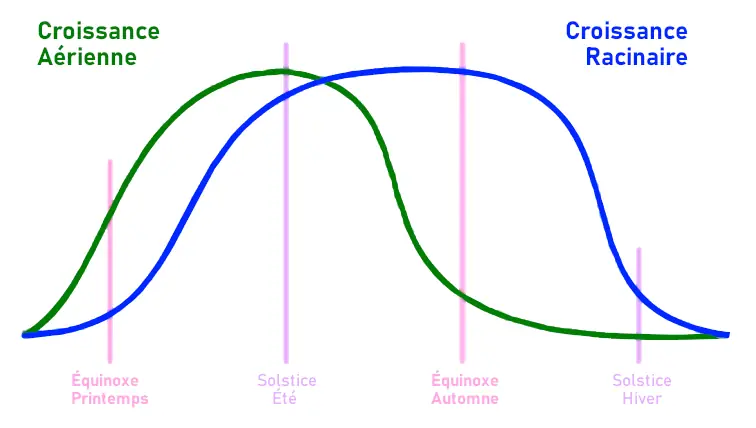Life Cycle of Perennial Woody Plants Throughout the Seasons in Temperate Climates

In Temperate Climates as in Europe, Woody Perennial Plants (trees and shrubs) have an annual vegetative cycle which follows the seasons
(curve in green: aerial growth)
Everyone knows this rhythm: Buds and flower bloom in spring, foliage growing until mid or late summer, leaf color change and fall in autumn, and ultimately, dormancy in winter
These plants, apparently, sleep for 4 to 6 months - a third to half of the year
= vegetative rest
In reality, they only sleep in winter, mainly January and February
= biological dormancy
Their life actively extends underground throughout the fall, when the sap descends into the roots, causing intense hypogeal biological activity
(blue curve: root growth)
In Woody Perennial Plants, life therefore follows a double movement during the year, with a break in winter:
- Rise of the Sap / Aerial growth
Up from the ground in the branches at the end of winter or in spring - Descent of the Sap / Root growth
Down to the ground in autumn prevents vein bursting due to the freezing of liquids, and strengthens the root network for greater vegetative vigor the following spring - Hibernation
Biological dormancy
Popular knowledge teaches us about this rythm in the French saying:
"On Saint Catherine's Day (November 25), all wood takes root"
This double cycle also exists in Perennial Herbaceous Plants (perennials), but in a less apparent way
It expresses the biological transcription of the Cosmic Earth-Sun Cycle
The Life of Nature is triggered by the annual cycle of its Energy Source, our Star the Sun
